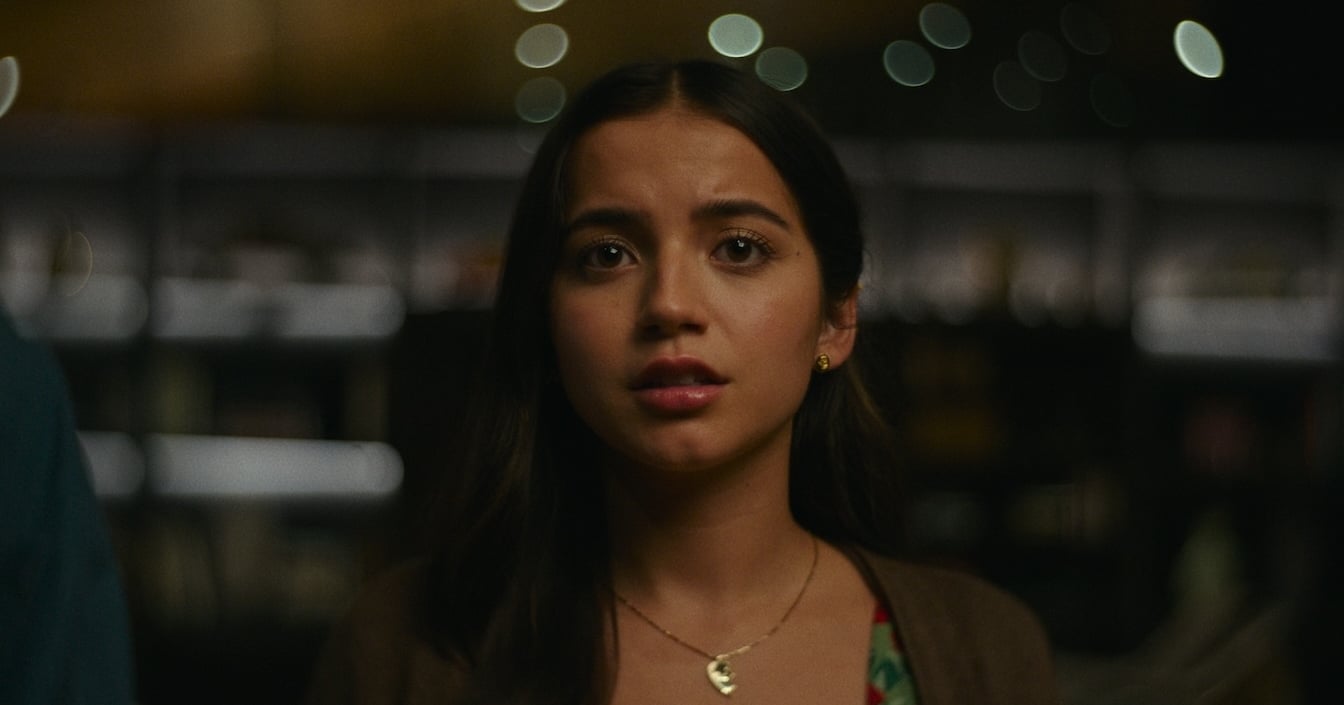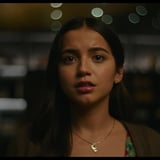I was diagnosed with OCD three years before reading “Turtles All the Way Down,” the 2017 novel by John Green, which was just adapted into a movie. I had recently entered my second major mental health crisis and found solace in the news that one of my favorite authors was releasing a novel that would draw inspiration from his own experience with OCD.
This book served as a vital part of my support system throughout my treatment and recovery – to me, it felt as important and life-saving as my friends and family.
“Turtles All the Way Down” helped me feel seen during my early battles with OCD. Although the main character experienced a different subtype of OCD than my own, her overall experience with the disorder accurately reflected my struggles at the time.
When I heard about the movie adaptation, I was eager to see how the book’s portrayal of OCD translated on screen, but also a little anxious to revisit some of my hardest times. My hope was that the movie did as good a job as the book at showing what OCD was really like.
So often, media portrayals of OCD end up relying on stereotypes or misconceptions about the condition. We often see OCD flippantly represented à la Monica Geller: either excessive meticulousness that makes for the perfect party host or a fixation on having things a certain way.
Instead, OCD is rooted in intrusive thoughts about topics including contamination, harm, and blasphemy. An OCD spiral begins with an unwanted, distressing thought that a non-OCD brain would likely acknowledge and ignore, but an OCD brain clings to. The intrusive thought leads to a spiral of doubt about its origin, purpose, and truth, a spiral that’s so stressful and upsetting that it often convinces a person with OCD that certain, often counterintuitive rituals are the only way to find relief.
I know now that the lack of mainstream media representation of the mental health disorder contributed to my confusion about what was happening to me before I was diagnosed. Accurate portrayals of the complexities of OCD – like what I read in “TATWD” – may have helped me recognize that my spiraling doubt was something more than a bout of anxiety, without feeling like I was losing my mind altogether. And I hoped the “TATWD” movie would become that for others who were currently experiencing what I’d gone through, all those years earlier.
OCD is referred to as the doubting disease because of the way it envelops a person in doubts of who they even are – or, in the case of “TATWD”‘s protagonist Aza, if they even are. In this film, Aza carries out much of her day in service of her thoughts. The experience of being a hostage to your own mind is one I feel will resonate with many sufferers of OCD and the control these thoughts appear to have on Aza leads her at times down a thought spiral about how she can even be real – shining a rare light on existential OCD.
I broke down how OCD is portrayed in “TATWD” – and the good news is, the film gets a lot right.
What OCD Really Feels Like
“TATWD” uses audio and visual effects to replicate the sensory experience of a thought spiral, and it does so more authentically than I’ve ever seen.
In one scene, Aza – the 16-year-old protagonist in “TATWD” – is sitting with her friends when her intrusive thoughts about contracting a disease creep in. Soon enough she’s disconnected from her surroundings: piercing static drowns out her friends’ voices, and we see a mini movie of her obsessive thoughts – another version of her, sweating in bed with a fever, ending up in a hospital bed.
As she walks to the bathroom to perform the compulsion – to clean a wound on her finger – tied to the obsession, she argues with herself the whole time, fruitlessly trying to rationalize with the OCD thoughts.
This scene so accurately captured the fun house mirror “logic” that OCD creates to keep you locked in. Ever the defense attorney, OCD always has a “what if” or “are you sure” to hook you back into the spiral.
What OCD Treatment Looks Like
Aza is in therapy, but is resisting both medication and exposure-response prevention therapy, a type of cognitive behavioral therapy that’s considered the most effective treatment for OCD, as supported by a 2021 review of 24 randomized controlled trials published in the Journal of Obsessive-Compulsive and Related Disorders. While her lackluster participation was frustrating to me, as someone who’s 10 years into OCD treatment and knows how effective it can be, it was also deeply relatable.
When I was newly diagnosed, I was also reluctant to engage in treatment when I learned that the evidence-based options were going to be deeply terrifying and uncomfortable at times.
I appreciate the way the movie accurately depicts the road to treatment and symptom management, which isn’t always a straight line. And I hope naming the type of therapy that’s helped so many people with OCD raises awareness, fosters empathy, and guides those who need it to the right resources.
“TATWD” also portrayed the tools people with OCD often rely on well. In an early scene, Aza’s best friend Daisy starts to tell an interesting story when she suspects that Aza is beginning to spiral. We see how it helps Aza disengage from her thoughts and redirect her attention to the present moment. We also see Daisy use humor to break down some of Aza’s spirals, which is often an effective tool for people with OCD. It was beautiful to see these small, but powerful demonstrations of a strong support system in a way that showed how Daisy has tried to understand how to be there for her friend.
What OCD Symptoms Can Look Like
The climax of the film displays Aza’s worst nightmare: being admitted to a hospital, which in her mind represents a cesspool of disease. The movie portrayed the raw terror that underlies OCD obsessions and fuels its compulsions so precisely that I found it both cathartic and triggering. If I had to highlight what I feel this film did for helping the layperson understand OCD, it would be this portrayal of fear.
I also appreciated that at no point did the film imply that Aza had the option to simply “control her thoughts,” a trap that other media portrayals of anxiety disorders often fall into. People with OCD can’t just push their fears away if they have enough of a reason; in fact, attempting to suppress an OCD thought will actually only worsen symptoms. Aza had to contend with her obsessions throughout the entire film, which felt true to life.
That said, the movie isn’t without hope. I believe the scene of Aza walking out of the hospital after navigating her crisis is one of the most powerful. As the film reminds us: her now was not her forever.
What OCD Recovery Can Look Like
The film slowly shows Aza integrating back into her life after recovering. Toward the end, the viewers are treated to a flash forward to the future, where we see Aza living life to its fullest, doing things the 16-year-old her cannot imagine she would be able to do.
But even in this happy future, we catch a glimpse of Aza reapplying a bandage to her finger, a reminder of the lasting presence OCD will have in her life. Mental illness does not get cured with proper treatment; it gets managed.
I think this film did an incredible job of also demonstrating the dichotomy of living in deep fear, but still wanting to pursue big dreams and step beyond expectations of what is comfortable. The OCD may create doubt, but it’s only uncomfortable because it’s not in line with the person’s values. Aza is told that her doubts make her real. Maybe I interpreted this differently than it was intended, but I believe the discomfort that the doubts create almost prove that deep down the person beyond the OCD is fighting the fight.
In a Vanity Fair interview about the film, John Green explains why he ended Aza’s story with a time jump: it was a way of sending a note to his younger self, who also had OCD; a way to say he was so sorry for the pain he had to suffer through, but that he was going to be OK.
Watching “TATWD” allowed me to do just that. As I cried alongside Aza, it was with a different perspective than the one I’d had when I read the book version of her story. Seven years later, the film gave me an opportunity to feel sad for what she and I shared, but in knowing it was going to be OK, to feel proud of my own strength.
I believe this story will be a reminder of resilience for those who have overcome moments of crisis with their mental illness, as well as a glimmer of hope for those currently in crisis that their now is not their forever.
Amanda Holtzman has a master’s degree in experimental psychology and over six years of experience in research, with a focus on cognitive resilience, psychological stress, and mindfulness. She also has a career in stage management for professional theater productions across the United States.




